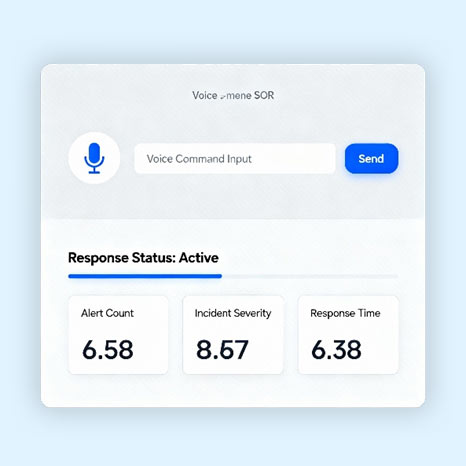Building the Future SOC

The Challenge Security Teams Face Today
Modern Security Operations Centers (SOCs) are drowning in alerts. Thousands pour in every day — each demanding attention, investigation, and action.
Analysts face alert fatigue, repetitive triage, and slow incident response times.
Traditional rule-based detection tools can’t keep up with today’s adaptive attackers, who use stealthy tactics like living-off-the-land, zero-day exploits, or lateral movement across networks. These gaps create dangerous blind spots — and attackers know exactly how to hide in them.
Enter the Multi-Agent AI-Powered SOC
Now imagine a SOC where a team of AI agents works together — each with a clear role, communicating like an elite cyber defense squad.
These AI agents don’t replace humans — they amplify them. Together, they form a 24/7 digital defense network that detects, hunts, and responds in real time.
Director Agent:
Oversees all other agents, coordinating responses and maintaining situational awareness.


Alert Triage Agent:
Automatically prioritizes alerts by severity and category, reducing analyst overload.
SOC Analyst Agent:
Correlates logs, detects MITRE ATT&CK techniques, and generates human-readable threat summaries.


Threat Hunter Agent:
Actively searches for stealthy or unknown threats that evade standard detection methods.
Incident Response Agent:
Executes automated playbooks — isolating hosts, rotating credentials, and containing threats.

Smarter Learning: When ML Meets LLMs
This next-generation SOC runs on hybrid intelligence — combining Machine Learning (ML) and Large Language Models (LLMs) for maximum accuracy and adaptability.
Isolation Forest ML models
Detect behavior anomalies that signature-based tools miss.
Multiple LLMs
(like Llama 3 and Mistral) work together through a weighted voting system, reducing false positives by up to 60%.
Fail-safe mechanism
Ensures traditional rule-based detection kicks in if AI inference slows down or becomes uncertain.
This synergy creates a resilient detection engine that learns continuously and protects dynamically.
See the Whole Attack — Not Just the Alert
With MITRE ATT&CK mapping and attack chain reconstruction, analysts can now visualize the entire attack path — from initial compromise to data exfiltration — in seconds.
What once took hours of manual correlation now appears as an interactive chain, making it clear how, when, and where attackers moved.
Real-Time Automated Incident Response
Integrated with automation frameworks like Ansible AWX, the AI-driven SOC can act instantly — no waiting for human intervention.
Common automated actions include:
- 🧱 Isolating compromised endpoints
- 🔑 Rotating or revoking credentials
- 🌐 Segmenting affected network zones
This reduces response time from hours to minutes, a critical advantage when every second counts.
Command Your SOC by Voice
What if managing your SOC felt as easy as talking to an assistant?
With an intelligent voice interface embedded into a Streamlit dashboard, analysts can interact with the SOC in natural language.
For example, you can simply say: “SOC, show ransomware alerts from yesterday.”
In seconds, the dashboard visualizes the relevant data — hands-free, fast, and intuitive.

Open Source. Scalable. Future Ready.
This platform isn’t locked behind proprietary walls — it’s open-source, modular, and scalable.
Whether you’re running a single-node lab setup or a full enterprise SOC, it grows with your needs.
Future roadmap highlights:
Continuous learning framework
Placeholder for analyst feedback integration and model improvements
Integration stubs for external threat intel
Feeds via MISP and OpenCTI APIs for enriched threat context.
Structured API calls
For TheHive/Cortex case management and analysis workflows.
Secure API access
Using environment variables for credential protection.
Modular placeholders
For attack simulation and future mobile app support.
Conclusion
The future Security Operations Center (SOC) powered by AI promises to overcome the limitations of traditional SOCs overwhelmed by alerts and manual tasks. AI-driven multi-agent systems work alongside humans, automating alert triage, detecting stealthy threats, and executing rapid incident response, reducing analyst fatigue and response times. This hybrid intelligence combines machine learning and large language models for smarter, continuously learning defenses. With real-time attack visualization, automated workflows, and user-friendly interfaces, AI-enhanced SOCs enable faster, more effective security operations.



